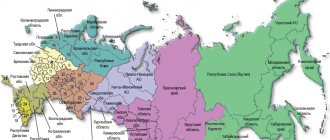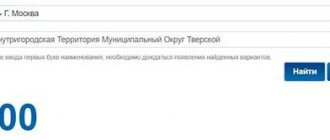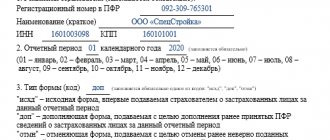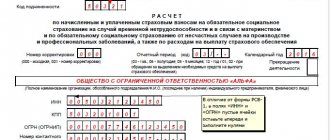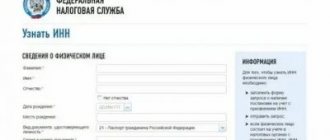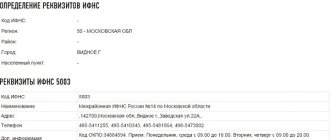The registration number of the customs declaration is a specific reporting codifier indicating information about the customs authority, the date of receipt and the serial number of the reporting form. Rules of application and decoding of the code according to the latest clarifications of controllers.
Back in October 2021, officials adjusted the rules for compiling documentation used in calculating value added tax. Among the numerous changes in the structure and content of the forms, a new requisite has been introduced - the registration number of the customs declaration (in the invoice, purchase and sales books).
Example
The current form of the customs declaration for goods is approved by Appendix No. 2 of the decision of the Customs Union Commission dated May 20, 2010 No. 257:
Let us say right away that the registration number of the cargo customs declaration must be understood as the number of the declaration indicated above. After all, as such, customs declarations are no longer valid due to the development of EAEU legislation.
According to clause 43 of the rules for filling out this document, the registration number of the customs declaration in 2021 and in the future is affixed to it exclusively by an official of the relevant customs office.
The same paragraph says what the registration number of the customs declaration looks like and gives its interpretation.
Here is a typical example of a customs declaration registration number. For each country participating in the Customs Union and each declaration it is different, although the format is the same:
| Russia: 10226010/090617/0003344 Armenia: 11/141117/0004455 Belarus: 06532/030217/0001122 Kazakhstan: 50208/290617/0002233 Kyrgyzstan: 10302/240817/0005566 |
Please note that each sample customs declaration registration number has the following format:
| XXXXXXX/XXXXXX/XXXXXXX |
Where:
- the left part is the code of the customs office that registered the declaration in accordance with its classification;
- the middle part is the day on which the declaration was registered (DDMMYY);
- the right part is the serial number of the declaration, which is given to it according to the customs journal on registration of declarations (starts with one for each calendar year).
As you can see, the number in question is always indicated through a slash “/”. There should be no spaces between elements.
Thus, an organization (individual entrepreneur, individual) should not have the question of how to fill out the registration number of the customs declaration. This is done exclusively by a customs official. It is only important to know where the registration number of the customs declaration is indicated in order to quickly find it.
Sometimes the registration number of the customs declaration (full customs declaration) is necessary to confirm zero VAT on actually sold goods exported (clause 1 of Article 165 of the Tax Code of the Russian Federation).
At the same time, the Ministry of Finance believes that the registration number of the customs declaration for export should be taken from the full declaration (letter dated October 23, 2015 No. 03-07-08/60952), and the Federal Tax Service believes that it is quite temporary (letter dated July 28, 2017 No. SD-4- 3/14879).
Also see “Full list of customs codes: table”.
How to check a customs declaration by number online
There are practically no free services for checking customs declarations. The only exception is checking the customs declaration on the FCS website. This opportunity is available only to legal entities connected to ]]>personal account]]> of a foreign trade participant on the official website of the Customs Service. Therefore, this option is possible for companies that themselves work with foreign suppliers.
Another option for checking the authenticity of a customs declaration online and for free is ]]>service]]> on the website of the Federal Tax Service - “Checking the receipt of information from the Federal Customs Service on documents to confirm the validity of the application of the tax rate of 0 percent VAT.” The service is aimed at declarants themselves, but in some cases its functionality is also useful for other market participants because allows you to verify that the specified declaration number is actually in the FCS database.
Read also: Confirmation of zero VAT rate
Where to get
Where to get the registration number of the customs declaration is stated in the same paragraph 43 of the rules for filling out the declaration for goods.
There is no need to search for a long time to find the registration number of the customs declaration. It is located immediately in the first line of column “A” of the first and each additional sheet of the declaration.
To clearly understand where to look at the customs declaration registration number, refer to the figure above and below. We have highlighted column “A” in red.
That's not all. Another source where the registration number of the customs declaration is indicated is the upper corner of each copy of the addendum, if one is used.
Customs declaration: decoding and example of the necessary information in the document
The list of information contained in the cargo declaration is divided into the following main blocks:
- Information about the person moving the goods, the sender.
- Name and coordinates of the cargo recipient.
- The name and codes of the country where the contract was concluded - the grounds for moving the cargo (export or import).
- Information about the country of origin and country of destination with codes adopted by the Customs Code of the Russian Federation.
- Delivery conditions, vehicle at the border, contract currency. This information is duplicated from the transaction passport, which is issued by the bank of the sender or recipient of the goods.
- Information about the cargo in accordance with the code classifier of goods (commodity nomenclature of foreign economic activity).
- Information about customs checkpoints, including the place of registration of the declaration and the place of border crossing.
- Data on the received quota for the goods (if they exist for the import or export of goods).
- Information on customs duties and fees calculated depending on the declared value of the cargo being transported.
- Other information required to fill out the customs declaration.
Important! Any discrepancy between the data declared in the declaration and the actual data will lead to a delay in customs procedures and will result in additional costs for a tidy sum.
Invalid value
Sometimes an accounting program may display a message that the registration number of the customs declaration has an incorrect value. It is important that the customs officer through whom the declaration passed is initially responsible for affixing the correct number. After all, he certifies the assigned number with his signature and personal number stamp.
It also happens that when following the chain of counterparties, the registration number of the customs declaration when transferred from one document to another has lost its correctness. This means you need to clarify it with your business partners.
Other ways to check the customs declaration
Another option for checking the authenticity of the customs declaration is to contact a specialized company that provides support services for foreign economic activity. All of them have access to the necessary databases and will provide information on the declaration of interest for a small fee. This option is optimal for a one-time purchase, but if you plan to work for a long time with a large number of import suppliers, then it makes sense to purchase special software or subscribe. The costs of such verification are justified because The information obtained allows you to protect yourself from unscrupulous suppliers. ]]>customs base]]> will also help in obtaining information from customs declarations.
Difference from declaration number
As was said, the main difference between the registration number of the customs declaration and other details of this document is its writing format.
In addition, Decree of the Government of the Russian Federation dated August 19, 2017 No. 981 actually abolished the term “customs declaration number” from the main VAT documents. On this basis, we can say that the difference between the customs declaration number and the registration number of this declaration is no longer relevant. Take line 150 of the VAT declaration, which is now called “Registration number of the customs declaration”:
Basic design requirements
- The document must be drawn up on the appropriate form, legibly, without any errors, corrections or blots.
- DT is filled out only in Russian in printed form.
- The declarant is not given the right to enter into the document information not specified in the Instructions for filling out the customs declaration.
- In case of correction, it must be certified by the signatures of the authorized person and the declarant. Otherwise, the amendment will be regarded as a blot, and the declaration will not be accepted.
If the information specified in the customs declaration is unreliable, the cargo may not be accepted or may be detained at the border for a long time.
On the invoice
It is necessary to indicate the registration number of the customs declaration in the invoice in column 11. From October 1, 2021, it received the same name as this detail:
Column 11 is filled in for goods that:
- do not come from Russia;
- released for domestic consumption upon completion of the free customs zone procedure in the Kaliningrad region.
Also see “New invoice form from 10/01/2017: form and sample filling”.
Cipher examples
| First group | Second group | Third group |
| 10714040/ | 110919/ | 0095741 |
| The declaration documentation was accepted by the customs post "Vostochny Sea Port of Nakhodka Customs" | Report submission date: September 11, 2021 | The serial numbering assigned to the documentation is 0095741. |
In the report, the code looks like this: 10714040/110919/0095741. Moreover, groups are separated only by a slash; no spaces, dots or other characters are provided.
Customs codes of other countries may be different. For example, in Armenia the customs authority code is only two digits. In Belarus there are only 5 characters, as in Kazakhstan and Kyrgyzstan.
In the sales book
Due to the changes introduced by Decree of the Government of the Russian Federation dated August 19, 2017 No. 981, from October 1, 2021, the registration number of the customs declaration in the sales book received its own separate column 3a:
The registration number of the customs declaration, which is issued upon the release of goods for domestic consumption upon completion of the free customs zone procedure in the Kaliningrad region, is entered in this column.
This indicator is filled in when selling goods for which VAT is calculated during customs declaration:
- was not paid according to paragraph 1 sub. 1.1 clause 1 art. 151 Tax Code of the Russian Federation;
- paid in accordance with paragraph 3 sub. 1.1 clause 1 art. 151 of the Code.
What documents are submitted along with the customs declaration?
Along with the goods declaration, the following documentation is submitted to the customs authority where registration takes place:
- a document certifying the authority of the declarant to submit a customs declaration on his own behalf;
- transport documents confirming the movement of cargo across the border of the Russian Federation;
- foreign economic transaction passport (copy);
- declaration of customs value;
- documents confirming control of delivery of goods;
- receipts for payment of customs duties;
- a copy of the customs declaration on electronic media.
Until the completion of registration, the declaration is not handed over to the submitter and remains only with the customs authority. After fulfilling all conditions and submitting the necessary documentation, the customs declaration is registered and receives legal force.
In the shopping book
From October 1, 2021, in the purchase book, the registration number of the customs declaration received its own column of the same name. Previously, it was called simply “Customs Declaration Number” (Resolution of the Government of the Russian Federation dated August 19, 2017 No. 981):
In this column, one or several registration numbers of the customs declaration are given, separated by a semicolon, when selling goods imported into Russia, when their customs declaration is provided for by the laws of the Eurasian Economic Union.
Column 13 is not filled in when reflecting data on an adjustment (corrected adjustment) invoice in the purchase book.
When reflecting in the purchase book the VAT paid when importing goods into the Russian Federation, in column 3 indicate one or several registration numbers of the customs declaration, separated by a semicolon
When reflecting VAT in the purchase book (clause 14 of Article 171 of the Tax Code of the Russian Federation), in column 3, provide the registration number of the customs declaration issued upon the release of goods for domestic consumption upon completion of the free customs zone procedure in the Kaliningrad region. In this case, columns 4 – 9 and 11 – 15 are not filled in.
Also see “Book of purchases and sales from October 1, 2021: new VAT forms.”
Read also
27.12.2017
Documents for import registration
The movement of goods across the customs border of the Russian Federation can be aimed at import or export. The documents accompanying the registration of a customs declaration for foreign trade transactions are different.
To fill out the customs declaration for imports, when deciphering the fields of the declaration, you will additionally need:
- Proof of compliance of imported goods. The specification is issued to the recipient company.
- Certificate form ST-1 (certificate of the country of origin of the goods).
- Price list, invoice, invoice, which contains an indication of the customs declaration number. Deciphering product codes in the price list is not required.
- Quality certificates, operational documents issued abroad in the country of origin.
Feature: when re-exporting, you may need a Form A certificate proving the origin of the goods in Russia.
- An invoice that contains the customs declaration number. Deciphering product codes in this document is not necessary, since it indicates the final indicators of export or import. Either a proforma invoice is issued in the form of an annex to the contract, or a specification.
- Documents confirming the purchase of goods on the territory of the Russian Federation, certificate form A.
- When transporting goods by road, it is mandatory to provide the customs authorities with a TIR-carnet (carrier insurance document) and a CMR - international road consignment note.
- Technical characteristics of products reflected in the relevant acts attached to the specifications or contract invoice.
Types of diesel fuel
You can submit the document electronically or in printed form. In the latter case, it is issued if:
- the cargo undergoes a transit procedure through the customs territory;
- delivered by post;
- Transportation documents were used instead of a declaration.
Transport for international transport placed under customs procedures is accompanied by a written declaration of goods.
Shapes:
- simplified, submitted before the cargo is placed under the customs procedure;
- temporary, which is issued in the absence of complete information about the cargo and with the permission of customs;
- periodic, accompanying the constant export of the same cargo from the territory of the Russian Federation.
Not all customs points of the Russian Federation accept declarations in electronic form. For this reason, accompanying the cargo with a printed document will be useful.
DT for the engine
The document is issued for all cargo imported into the territory, including car engines. A correctly completed declaration will be required to re-register documents for the car in case of replacing the engine. In addition to this document, you will need information about the seller and a purchase and sale agreement.
Important. If one engine is indicated in the documents for a car, but another is actually installed, the traffic police will not register such a vehicle. Therefore, when purchasing a car, be sure to check the actual engine number with the one indicated in the title.
If there is a discrepancy, ask the seller for documents (declaration of goods and purchase and sale agreement). If the seller is not willing to give you this documentation, it is better to look for another car.
DT for a car
A car imported from abroad or exported from the Russian Federation as a commodity is subject to mandatory declaration if its value is more than $5,000. If there is no document issued for the imported car, it will not be possible to register it.
An individual who imports a car for himself fills out a declaration form and a receipt order. Both documents will be required by the traffic police vehicle registration service.
When buying a car from a dealership or from another legal entity, the owner receives a title and a certified copy of the DT.
Important! It is necessary to check the declaration data, PTS and the actual VIN number of the car. If there is a discrepancy in the information, the vehicle will not be subject to registration in the Russian Federation.
Cargo customs declaration
| This article or section describes the situation in relation to only one region, possibly violating the rule of balanced presentation. You can help Wikipedia by adding information for other countries and regions. |
| This article lacks links to sources of information. Information must be verifiable, otherwise it may be questioned and deleted. You may edit this article to include links to authoritative sources. This mark was set on February 10, 2021. |
The significance of the subject of the article is called into question. Please show in the article the significance of its subject by adding evidence of significance according to specific criteria of significance or, if there are no specific criteria of significance for the subject of the article, according to the general criterion of significance. Details may be on the talk page.
|
A cargo customs declaration (CCD) is the main document issued when moving goods across the customs border of a state (export, import).
The customs declaration is issued by the cargo manager and certified by the customs inspector, and subsequently serves as the basis for passage across the border. The declaration contains information about the cargo and its customs value, the vehicle carrying out delivery, the sender and the recipient. Without submitting a cargo customs declaration, state customs control authorities do not accept goods and property for customs clearance for passage across the state border.
Another function of the cargo customs declaration is a document-statement submitted by participants in foreign economic activity on the legality of the transaction, that is, the compliance of all actions in the process of export and import operations with the legislation of the Russian Federation. The information specified in the cargo customs declaration must be in full compliance with other factual data presented for customs control of the goods (property). The presence of discrepancies between the information specified in the cargo customs declaration and the actual data discovered during customs control entails a delay of the goods and requires re-registration of the cargo customs declaration.
The next function of the cargo customs declaration is confirmation of the legality of import and export of goods by customs control authorities. Customs control ends with identification marks from the customs office of the Russian Federation, after which the cargo customs declaration in the future acquires the meaning of a kind of international customs “passport” of goods, which has due legal force for foreign customs services and other governing bodies of the relevant foreign states.
The presence of a cargo customs declaration is mandatory for customs clearance of goods in 98 countries with which Russia trades. The cargo customs declaration is also important as an accounting and statistical document.
The cargo customs declaration is submitted to customs within the period established by law, which ranges from one day to two weeks, counting from the day the goods arrive at customs. The cargo customs declaration contains the number of the cargo document according to which the goods were accepted at customs (at port customs also the name of the ship on which the goods arrived), the tariff name of the goods or a link to the corresponding article of the customs tariff, the price and value of the consignment of goods. The cargo customs declaration also provides a list of documents usually attached to it (invoice, shipping specification, quality certificate, etc.).
The cargo customs declaration is a set of four bound sheets TD1 (main sheet) and TD2 (additional sheets). There should be no erasures or blots in the cargo customs declaration.
The sheets of the cargo customs declaration are distributed as follows: the first sheet of the cargo customs declaration remains in the customs office and is stored in a special archive; the second sheet of the cargo customs declaration (statistical) - remains in the customs statistics department; the third sheet of the cargo customs declaration is returned to the declarant; the fourth sheet of the cargo customs declaration: a) when exporting goods, it is attached to the shipping documents and sent along with the goods to the customs authority in the region of which the border checkpoint is located; b) when importing goods, it remains in the customs value department of the customs authority carrying out customs clearance. Some countries allow the exporter or importer to submit a temporary or preliminary cargo customs declaration. The importer submits a preliminary cargo customs declaration when, by the time the cargo arrives at customs, he does not have accurate information about it. After unloading the goods and inspecting them, the importer submits a customs cargo declaration of the usual type. The exporter submits a preliminary cargo customs declaration when selling goods from a warehouse, supplying transit goods for which a refund of previously paid duties is provided, goods subject to various types of restrictions, etc.
Declaration fields - correct filling
The rules for filling out the declaration fields for export and import are the same:
- The first section indicates the type of declaration, marked with the letters IM (import) or EC (export). In the case of import of goods into the customs territory of the Russian Federation without restrictions on use, the second subsection of the column is entered with code 40. If the document is issued in electronic form, then the ED marker is placed in the third subsection - electronic declaration. In our sample, the declaration is issued in paper form, and this subsection in the declaration is not completed.
- In the upper right corner of the form, in section A, the customs declaration number is indicated; the decoding includes three groups of numbers, under which the customs code, the date of drawing up the declaration and the serial number in the accounting journal are indicated.
- The leftmost section means the declaration form, where the first number 1 means that this is the main sheet - TD1, and the second indicates the number of additional sheets. If they are not issued, 1/1 is entered.
- Column 4 is completed if loading specifications are present.
- The fifth and sixth columns indicate the total imported goods and the number of cargo items. In the presented sample - 1 product, 1 place. This is an important indicator; it must correspond to actual transportation.
- The seventh column is filled in if a preliminary declaration has been carried out, and the design features are indicated. It is filled out by customs.
- 2 columns - sender, 8 columns - recipient. Full names, legal address are written, the country of departure and receipt is indicated in the form of a code in accordance with the rules of customs clearance.
- Column 9 indicates the person responsible for the finance. the settlement is usually the counterparty to the contract. May be the same as the recipient of the shipment.
- Column 12 indicates the total amount of delivery. 22 and 23 - indicate in what currency the delivery is made, with codes of the contract currency and the exchange rate on the date of registration of the declaration.
- Field of column 20 - terms of delivery - is filled in according to the information provided by the contract documents. The delivery location is recorded here. In our case, these are the CIP terms of Incoterms, which means that transportation and insurance of cargo is paid up to a certain point along the route. Maybe to the border, to a warehouse, in our case - to a customs warehouse in Moscow.
- Columns for indicating payments and duties. Each indicator is indicated in its own column: customs duties - 1010, duties - 2010, VAT - 5010.
Below is a sample of the complete filling out of the customs declaration for imports: a breakdown of the columns indicating the completed information.
More details about the rules for filling out declarations, including in electronic form, can be found in the video below.
Sections, subsections and positions of product groups
In the Commodity Nomenclature of Foreign Economic Activity, goods are systematized into categories and types, provided with a short name and description.
Product indicators are formed by:
- sections;
- groups;
- subgroups.
For those goods that are not classified in sections or groups, the following code decoding is used in the customs declaration: “other” and “other of other” items of the product nomenclature.
For example, when filling out a declaration in the product description column, you need to perform the following sequence of actions:
| Description | |
| HS codes | indicate a four-digit code separated by commas or specify up to ten characters |
For example, the query “oil sensor” will find examples of declarations with several types of product descriptions of the form: “... pressure sensor...” “... pressure measuring device - special sensor...”
From the proposed options for answering the request, you must select the greatest match for keywords that relate to the target product group for the declared cargo in the declaration. For example, for the word “tractor,” the HS search engine can return codes for an agricultural tractor, as well as a toy tractor. Carefully deciding on the product group is the key to successful declaration. The more complete the request, the more accurate the codes of the cargo being processed.
And, of course, don’t forget about the “other” goods position. In customs slang, such groups are called “baskets”. Used when your cargo is not in the named product sections and positions. Then the description uses the chain “other-other-other”.
Features of documents for goods in the customs regime of export/import
Information data reflected in the customs declaration indicates the legitimacy of the transaction and the cargo being moved. They prove the absence of counterfeit products in full compliance with the rules for the import and export of goods on the territory of the Russian Federation.
The rules for filling out the declaration are regulated by Federal Law No. 113 “On customs regulation in the Russian Federation” as amended on November 27, 2010.
In its structure, the customs declaration form consists of two forms:
- TD 1 is the main sheet of the declaration; the export or import sign is affixed to it (EC, IM, respectively). Filled out for products with the same name. For example, spare parts for cars, with one code according to the Commodity Nomenclature of Foreign Economic Activity up to the ninth digit.
- TD 2 – additional bound sheets of the customs declaration. Filled out if there are goods that are not included in the main declaration sheet. No more than three different product categories can be entered here, while the total number of units of cargo cannot exceed 33 items per one main sheet of the declaration.
Important. In some cases, goods are registered according to the inventory. It replaces TD 2 and is applied in the absence of mandatory payment of duties, taxes and fees, licenses and quotas.


